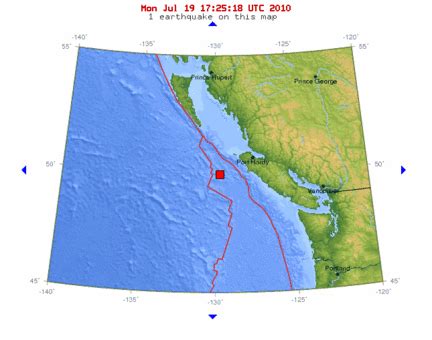5.1 Magnitude Earthquake Rocks Sunshine Coast, Vancouver: A Comprehensive Overview
The Sunshine Coast and Vancouver region recently experienced a significant seismic event, a 5.1 magnitude earthquake. This article will provide a comprehensive overview of the earthquake, its impact, and what we can learn from such events. We'll explore the earthquake's effects, safety measures, and the importance of preparedness.
Understanding the Earthquake
The earthquake, which struck on [Insert Date of Earthquake Here], originated [Insert Depth and Location of Epicenter Here]. The 5.1 magnitude, while significant, wasn't as powerful as some historical earthquakes in the region. However, its shallow depth contributed to a more noticeable impact felt across a wider area, including the Sunshine Coast and Vancouver. Seismic waves, generated by the sudden movement of tectonic plates, spread outward from the epicenter, causing ground shaking.
Impact and Aftermath
Reports of shaking intensity varied across the region. While many residents reported feeling moderate to strong shaking, the impact on infrastructure was relatively minimal. There were reports of:
- Minor structural damage: Some buildings experienced minor cracks or damage to non-structural components.
- Power outages: Localized power outages were reported in some areas, likely due to damaged power lines.
- Landslides: In areas with unstable terrain, minor landslides may have occurred.
- Public alarm: Many residents were understandably alarmed, with many taking to social media to share their experiences and check on neighbors.
Fortunately, there were no reports of significant injuries or fatalities. This highlights the importance of building codes and earthquake-resistant construction in mitigating potential damage.
Safety Measures and Preparedness
Experiencing an earthquake can be terrifying. Knowing what to do before, during, and after an earthquake is crucial for staying safe.
Before an earthquake:
- Develop an emergency plan: This includes establishing a meeting place, identifying evacuation routes, and preparing an emergency kit with essential supplies (water, food, first-aid kit, etc.).
- Secure your home: Secure heavy objects that could fall during shaking.
- Learn earthquake safety techniques: Practice "drop, cover, and hold on."
During an earthquake:
- Drop, cover, and hold on: Get under a sturdy table or desk, cover your head and neck, and hold on until the shaking stops.
- Stay away from windows and exterior walls: These are more likely to be damaged.
- If you are outside, move to an open area away from buildings and power lines.
After an earthquake:
- Check for injuries: Provide first aid if necessary.
- Check for gas leaks and fire hazards.
- Be aware of aftershocks: These are smaller earthquakes that can occur after a larger one.
- Follow instructions from authorities.
Learning from the Event
The 5.1 magnitude earthquake serves as a reminder of the seismic activity in the region. While major earthquakes are less frequent, smaller events are common. This emphasizes the importance of ongoing preparedness and seismic hazard mitigation efforts.
Further research and analysis of this earthquake will contribute to a better understanding of seismic patterns and improve future earthquake prediction models. This information can then be used to inform building codes, emergency response plans, and public education initiatives. By learning from events like this, we can better protect ourselves and our communities from the potentially devastating effects of future earthquakes. Continued vigilance and preparation are key to minimizing the impact of seismic events.
